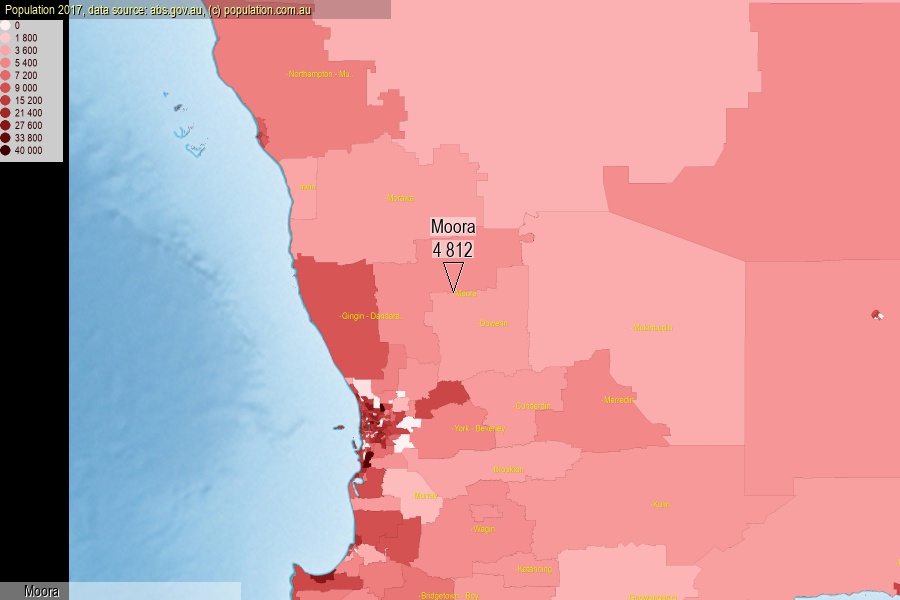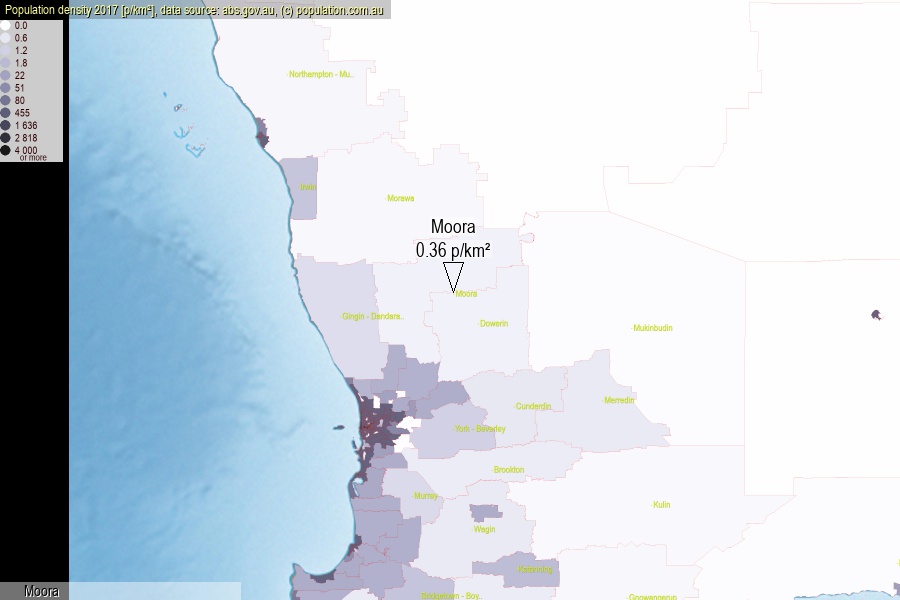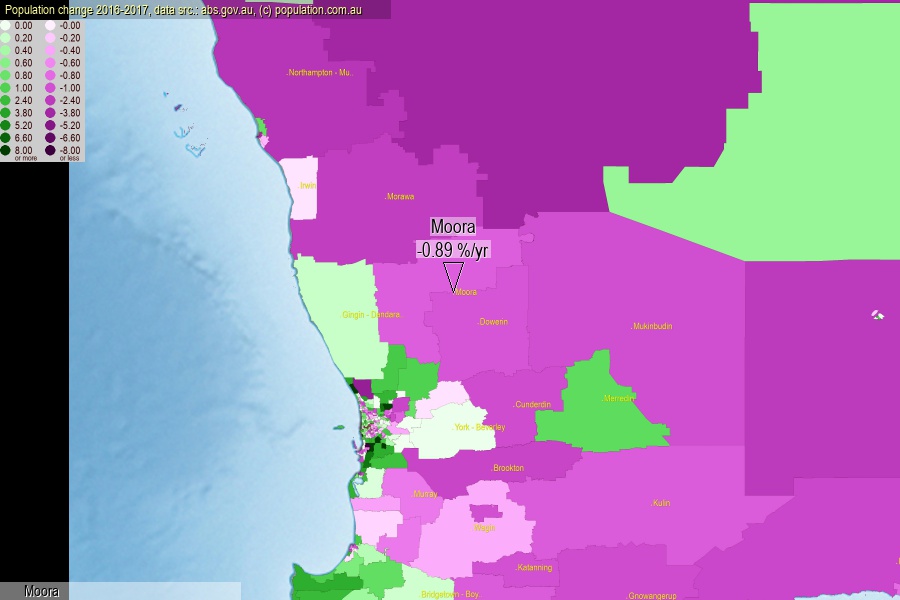 population.com.au
population.com.auLast official estimated population of Moora (as Statistical Area Level 2) was 4 812 people (on 2017-06-30)[2]. This was 0.02% of total Australian population and 0.186% of WA population. Area of Moora is 13 538.40 km², in this year population density was 0.36 p/km² . If population growth rate would be same as in period 2016-2017 (-0.89%/yr), Moora population in 2025 would be 4 481. [0]



Click to enlarge. Moora is located in the center of the images.
Population [people], population density [p./km²] and population change [%/year] [2]
View borders » (new window) [4]
[1991-1992] -2.10 %/Yr.
[1992-1993] -0.82 %/Yr.
[1993-1994] -0.13 %/Yr.
[1994-1995] -1.28 %/Yr.
[1995-1996] -0.93 %/Yr.
[1996-1997] +1.36 %/Yr.
[1997-1998] +0.76 %/Yr.
[1998-1999] -0.18 %/Yr.
[1999-2000] +0.87 %/Yr.
[2000-2001] -0.16 %/Yr.
[2001-2002] -1.51 %/Yr.
[2002-2003] -2.13 %/Yr.
[2003-2004] -3.39 %/Yr.
[2004-2005] -2.12 %/Yr.
[2005-2006] -3.09 %/Yr.
[2006-2007] -2.70 %/Yr.
[2007-2008] -0.13 %/Yr.
[2008-2009] +0.59 %/Yr.
[2009-2010] -0.19 %/Yr.
[2010-2011] -0.27 %/Yr.
[2011-2012] +0.82 %/Yr.
[2012-2013] +0.21 %/Yr.
[2013-2014] +0.19 %/Yr.
[2014-2015] +0.58 %/Yr.
[2015-2016] -0.33 %/Yr.
[2016-2017] -0.89 %/Yr.
[0] Calculated with linear interpolation from officially estimated population
[1] Read more about SA2 and Australian Statistical Geography Standard (ASGS) on abs.gov.au
[2] Population data from Australian Bureau of Statistics (Population and density: 2017; change: 2016-2017)
[3] Digital Boundaries: Australian Statistical Geography Standard (ASGS) 2016.
[4] Border coordinates are simplifyed using Ramer-Douglas-Peucker algorithm.